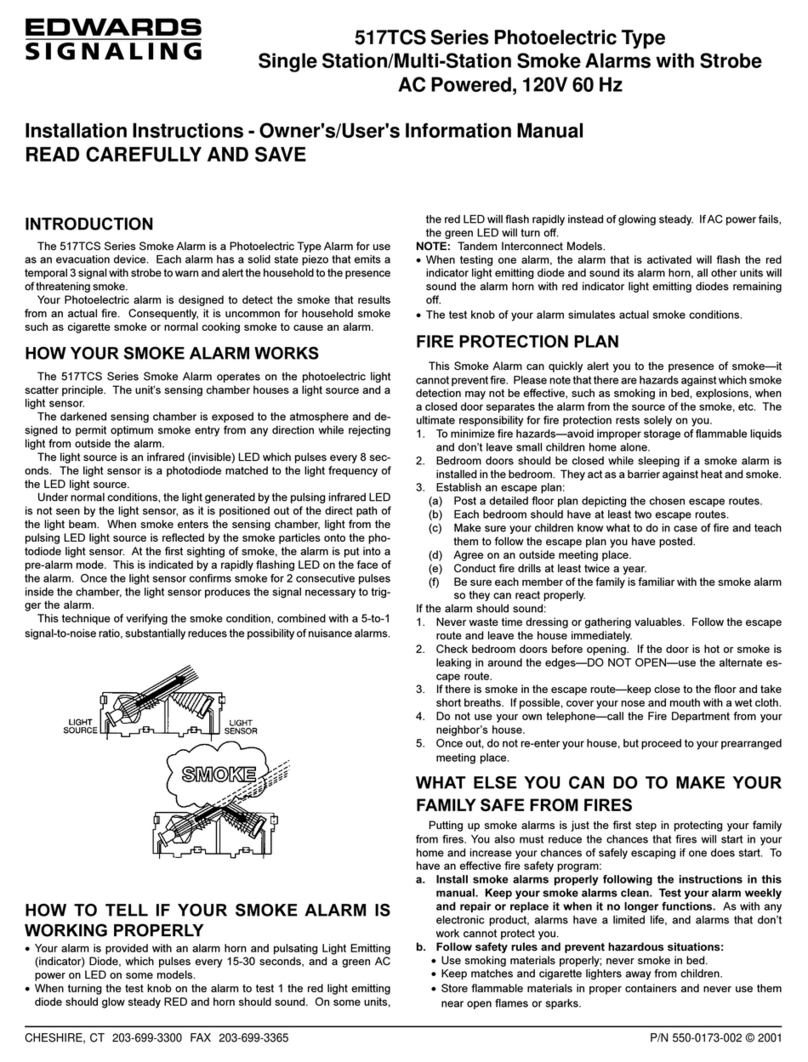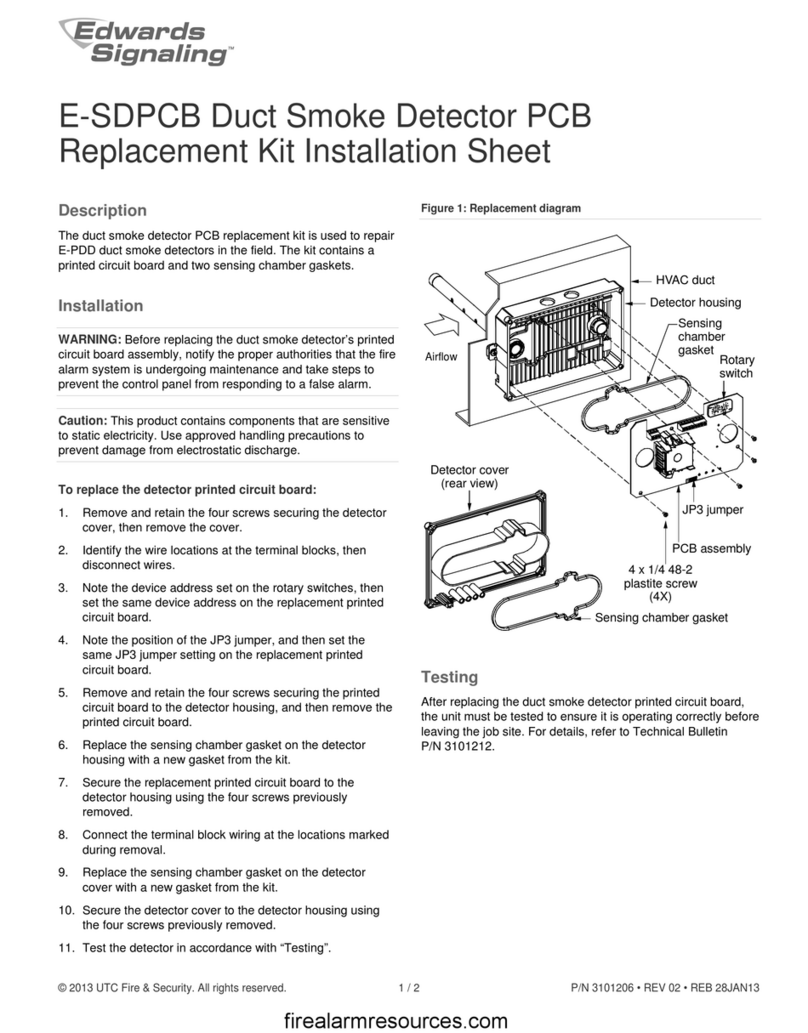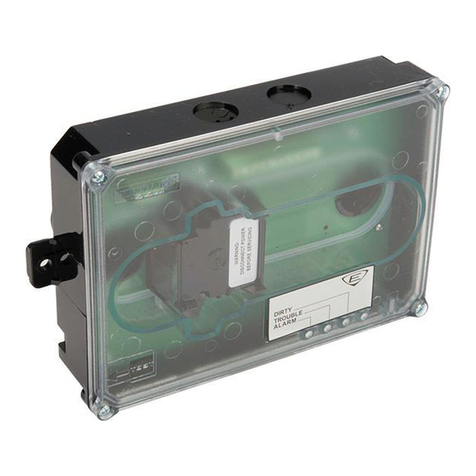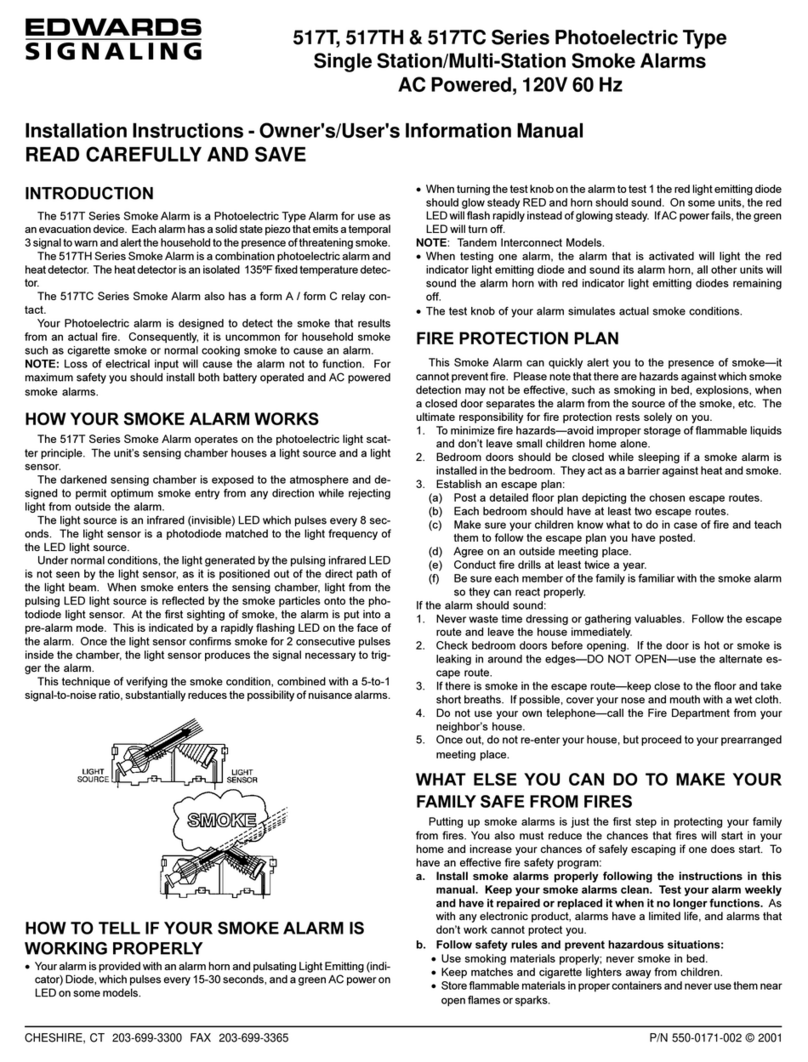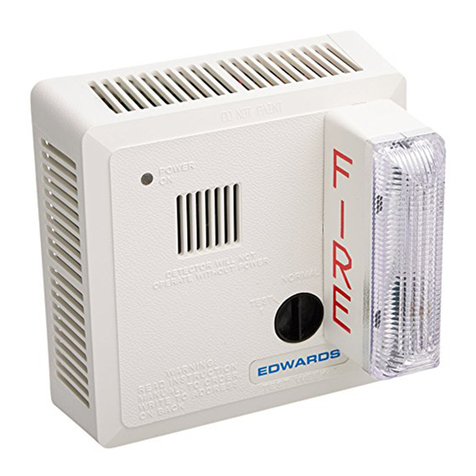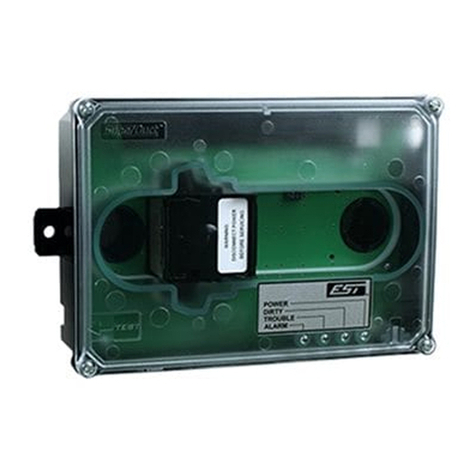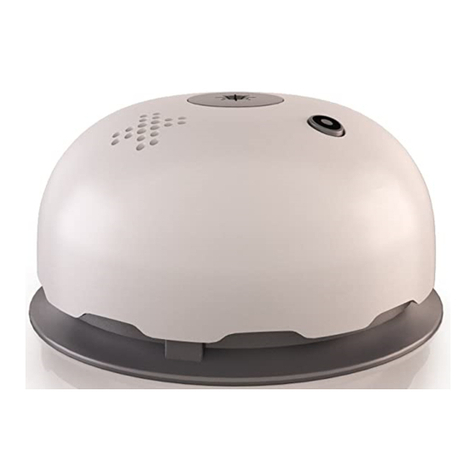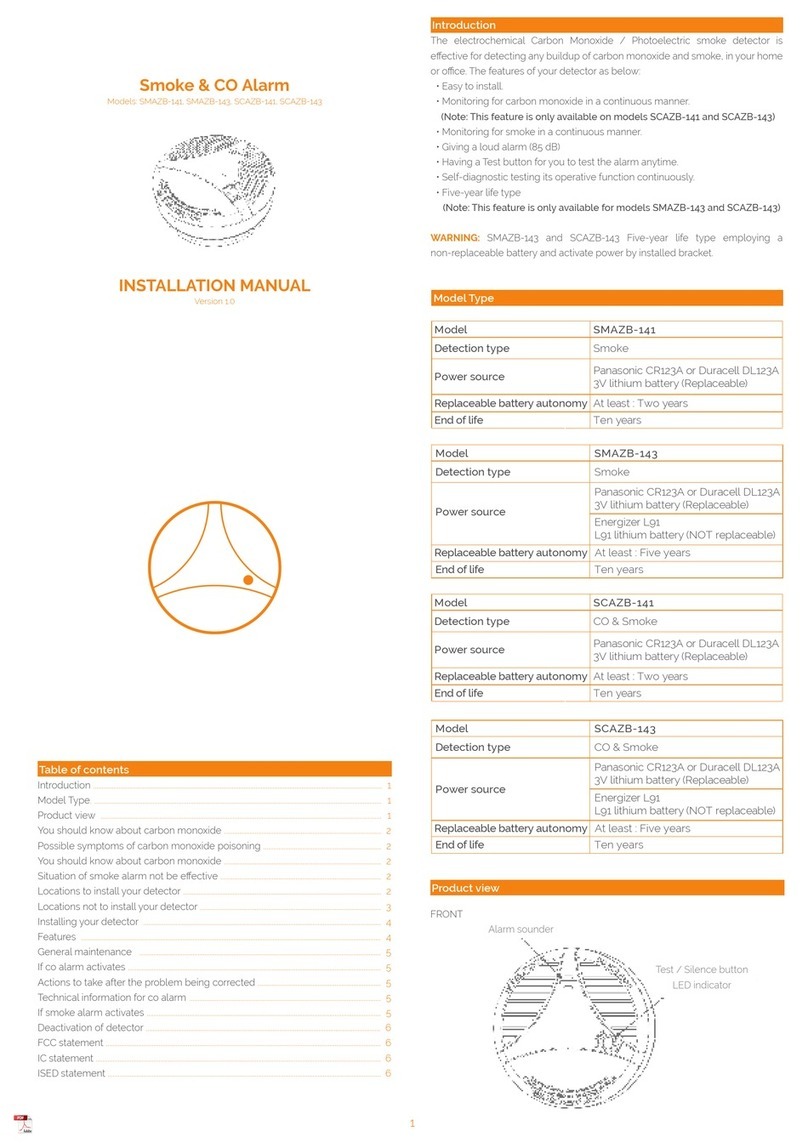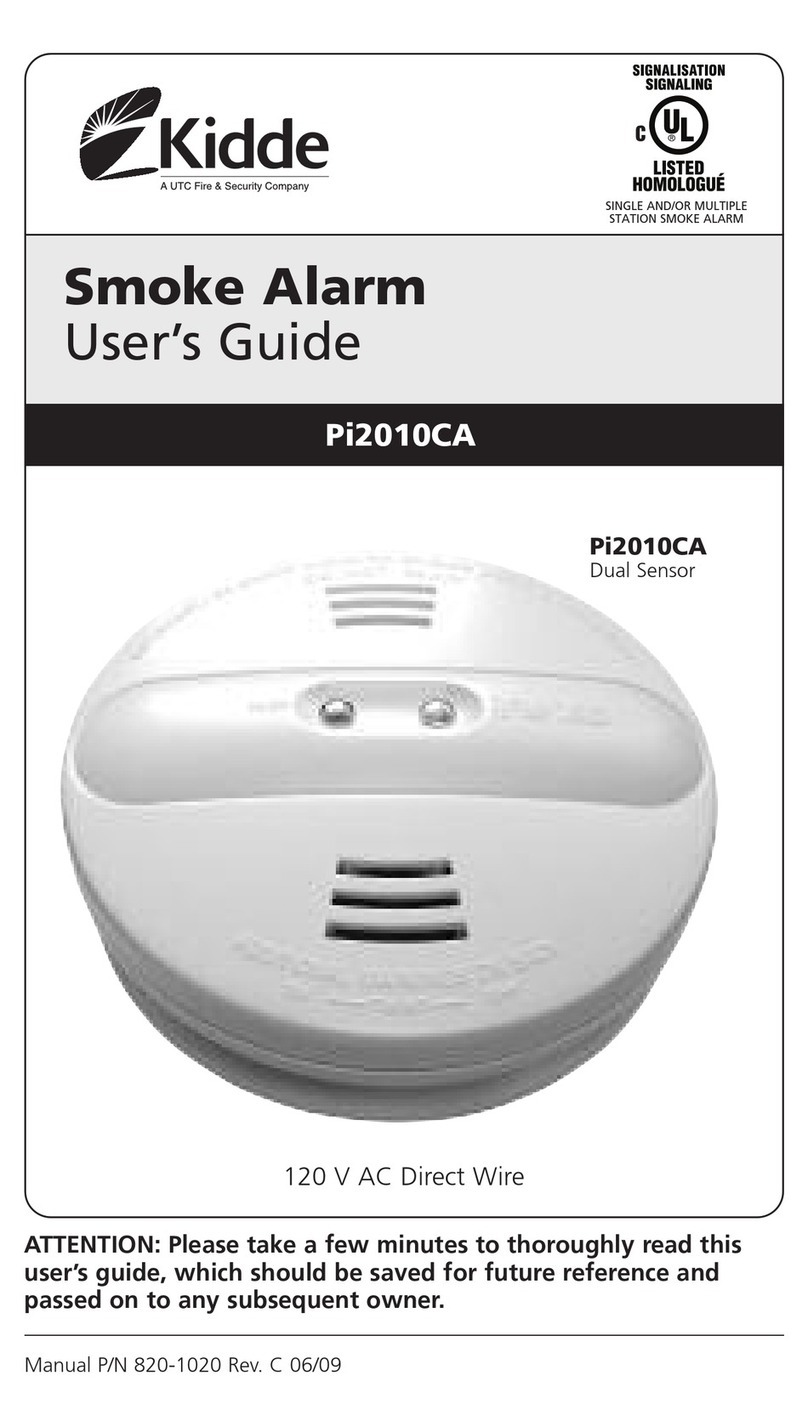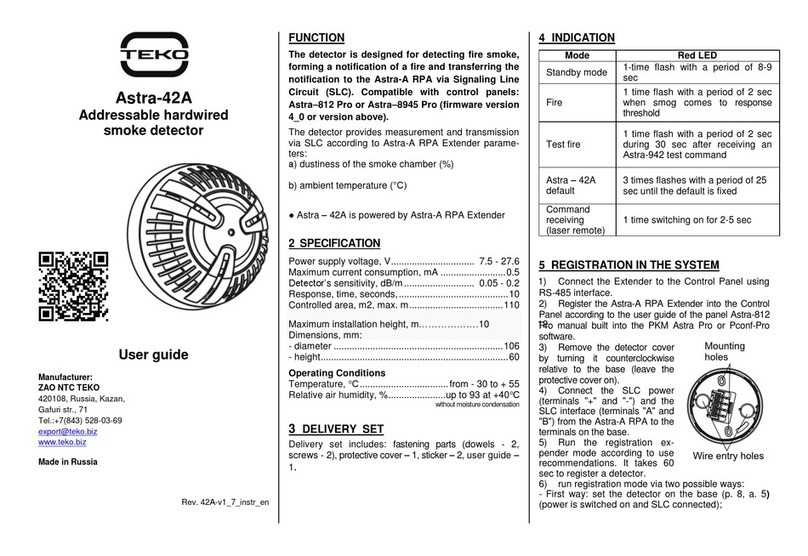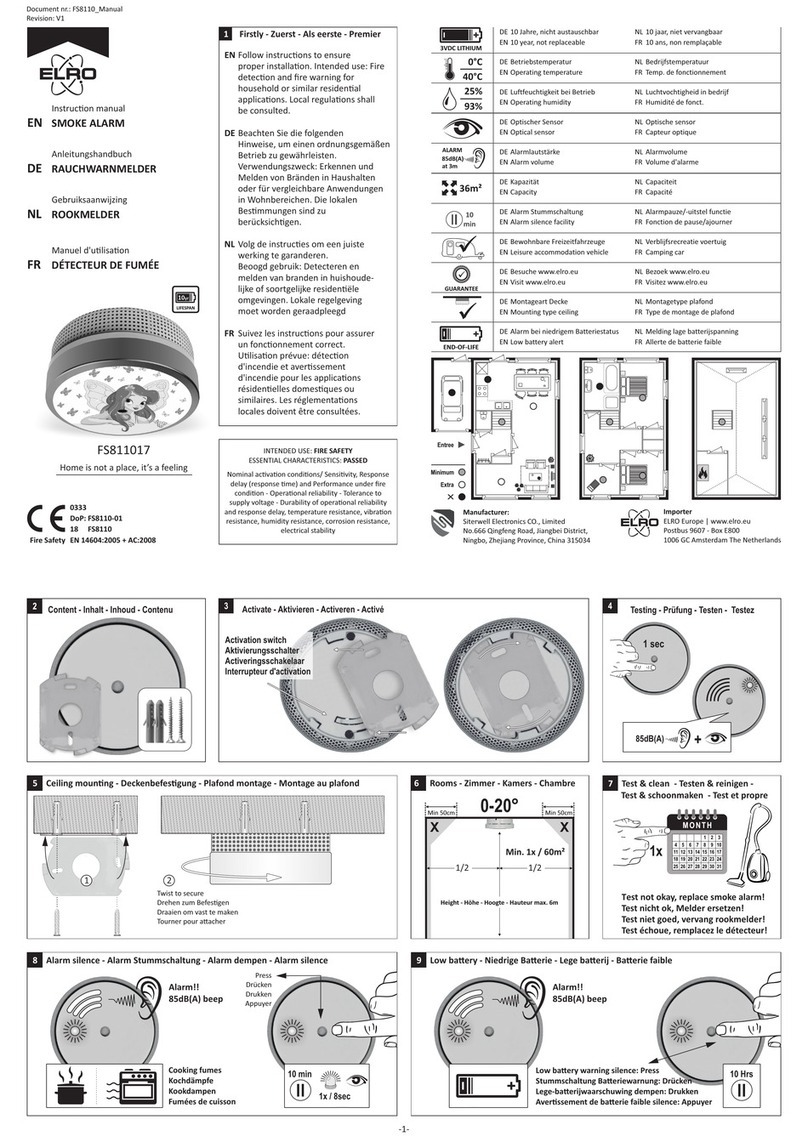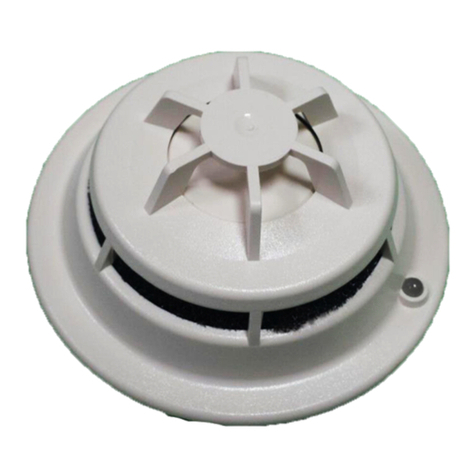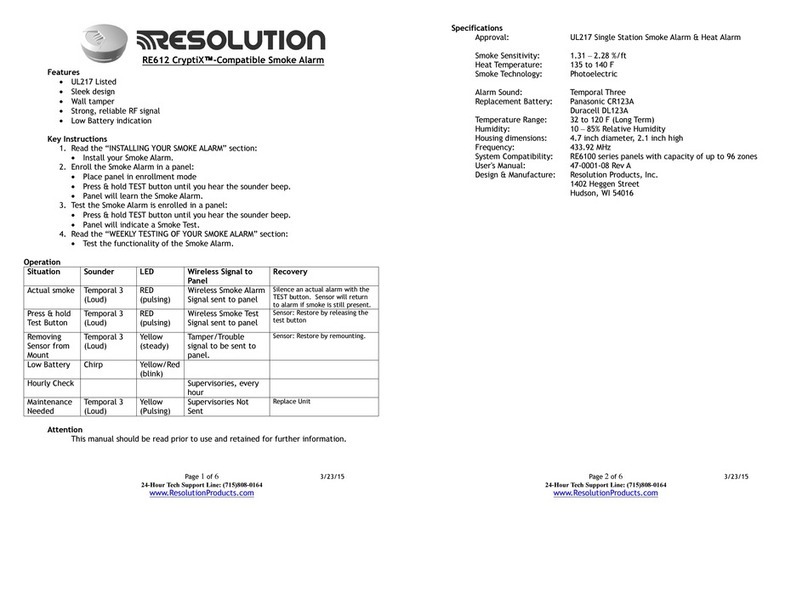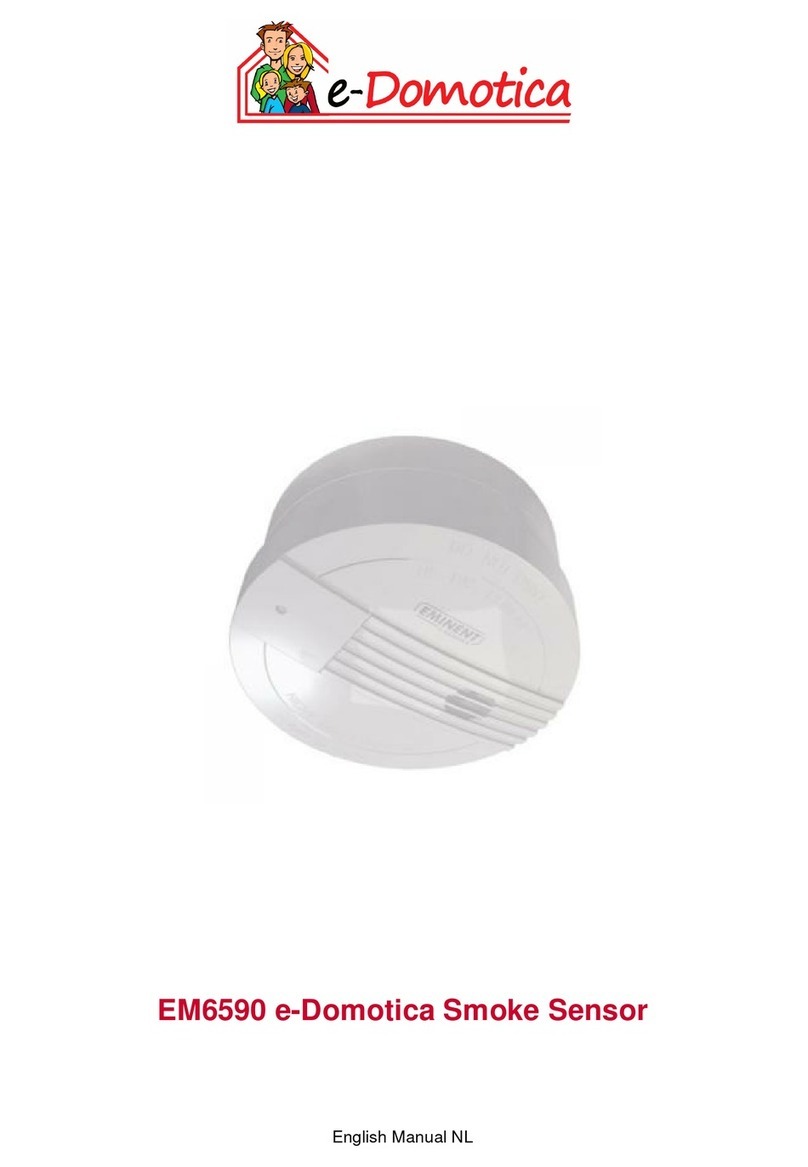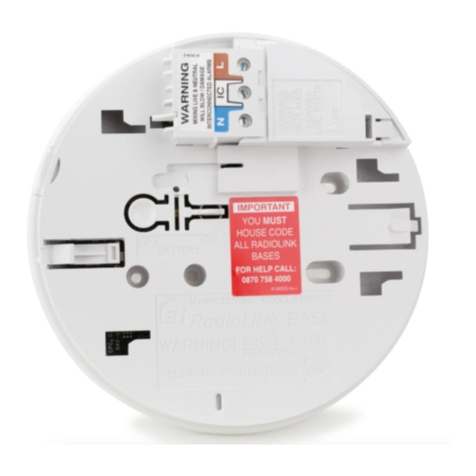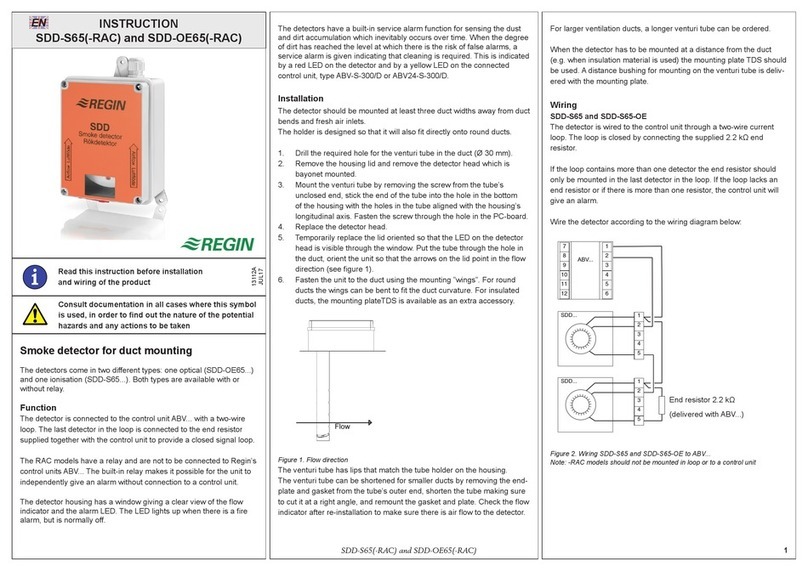
Technical Bulletin
10 SuperDuct Four-Wire Duct Smoke Detector
To perform a sensor alarm test:
1. Hold the test magnet where indicated on the side of the
sensor housing for seven seconds. Verify that the sensor’s
Alarm LED turns on.
After performing a sensor alarm test, reset the sensor by
holding the test magnet against the sensor housing for two
seconds. Verify that the sensor’s Alarm LED turns off.
Sensor dirty test
The sensor dirty test provides an indication of the sensor’s
ability to compensate for gradual environmental changes. A
sensor that can no longer compensate for environmental
changes is considered 100% dirty and requires cleaning or
replacing. You must use an SD-MAG test magnet to initiate a
sensor dirty test.
The sensor’s Dirty LED indicates the results of the dirty test as
shown below.
Flashes Description
1 0 to 25% dirty. This is typical on a newly
installed duct detector.
2 26 to 50% dirty
3 51 to 75% dirty
4 76 to 99% dirty
Caution: Holding the test magnet against the sensor housing
for longer than seven seconds will put the duct detector into
the alarm state and activate all automatic alarm responses.
To perform a sensor dirty test:
1. Hold the test magnet where indicated on the side of the
sensor housing for two seconds. Verify that the sensor’s
Dirty LED flashes.
Controller tests
Controller alarm test
The controller alarm test checks the controller’s ability to
initiate and indicate an alarm state.
Caution: This test places the duct detector into the alarm state.
Unless part of the test, disconnect all auxiliary equipment
from the controller before performing the test. If the duct
detector is connected to a fire alarm system, notify the proper
authorities before performing the test.
To perform a controller alarm test:
1. Press the controller’s test/reset switch for seven seconds.
Verify that the controller’s Alarm LED turns on.
After performing a controller alarm test, reset the sensor by
pressing the test/reset switch for two seconds. Verify that the
controller’s Alarm LED turns off.
Controller dirty test
The controller dirty test checks the controller’s ability to
initiate a sensor dirty test and indicate its results.
Caution: Pressing the controller’s test/reset switch for longer
than seven seconds will put the duct detector into the alarm
state and activate all automatic alarm responses.
To perform a controller dirty test:
1. Press the controller’s test/reset switch for two seconds.
Verify that the controller’s Trouble LED flashes.
Remote test/reset station tests
Test/reset station alarm test
The test/reset station alarm test checks a test/reset station’s
ability to initiate and indicate an alarm state.
Caution: This test places the duct detector into the alarm state.
Unless part of the test, disconnect all auxiliary equipment
from the controller before performing the test. If the duct
detector is connected to a fire alarm system, notify the proper
authorities before performing the test.
To perform the alarm test using an SD-TRK4:
1. Turn the key switch to the RESET/TEST position for
seven seconds. Verify that the test/reset station’s Alarm
LED turns on.
After performing an alarm test using an SD-TRK4, reset the
sensor by turning the key switch to the RESET/TEST position
for two seconds. Verify that the test/reset station’s Alarm LED
turns off.
To perform the alarm test using an SD-TRM4:
1. Hold the test magnet to the target area for seven seconds.
Verify that the test/reset station’s Alarm LED turns on.
After performing an alarm test using an SD-TRM4, reset the
sensor by holding the test magnet to the target area for two
seconds Verify that the test/reset station’s Alarm LED turns
off.
Test/reset station sensor dirty test
The test/reset station dirty test checks the test/reset station’s
ability to initiate a sensor dirty test and indicate the results.
For the test/reset station to indicate the results of the sensor
dirty test, it must be wired to the controller as shown in Figure
13 and the sensor dirty test must be configured to operate the
